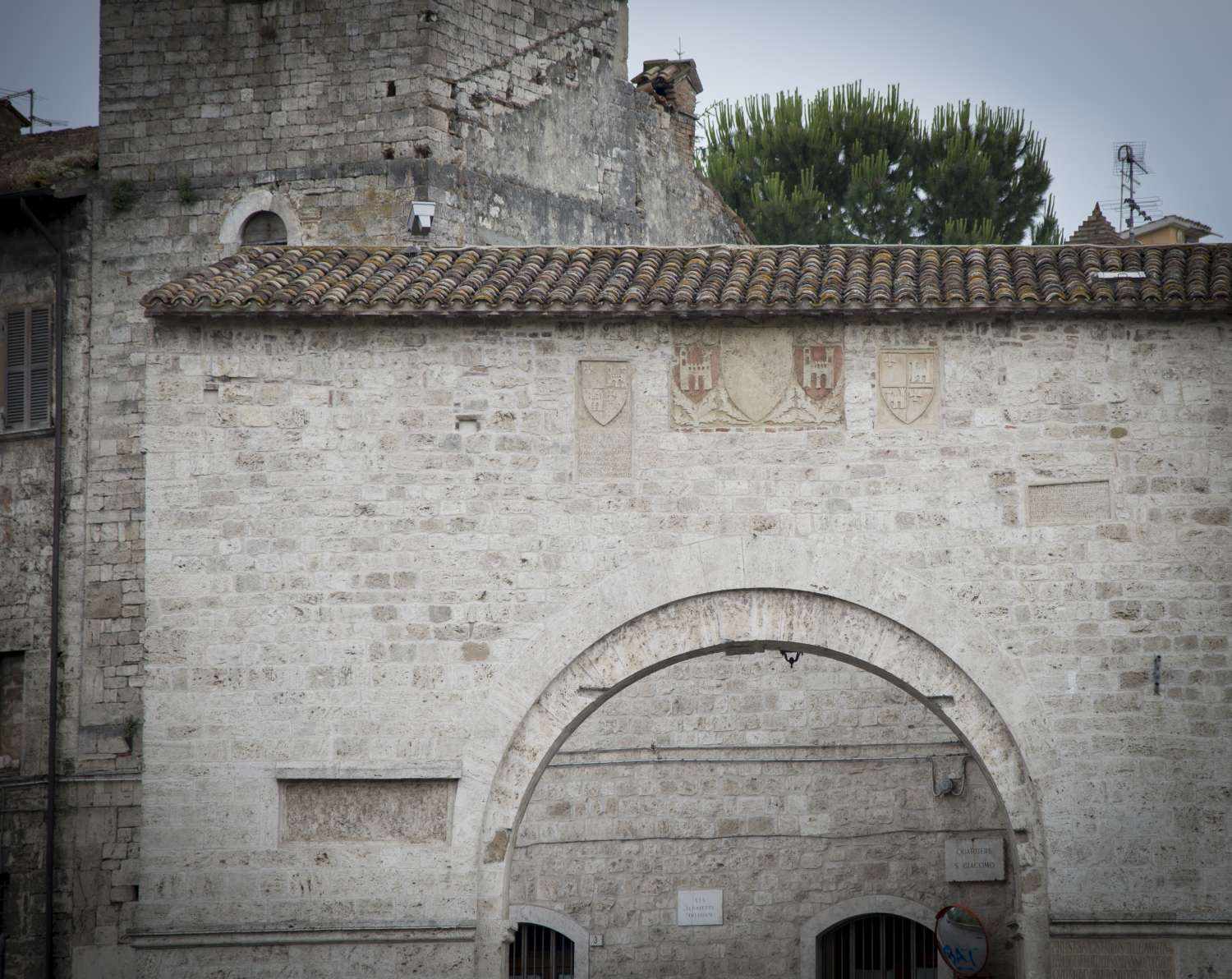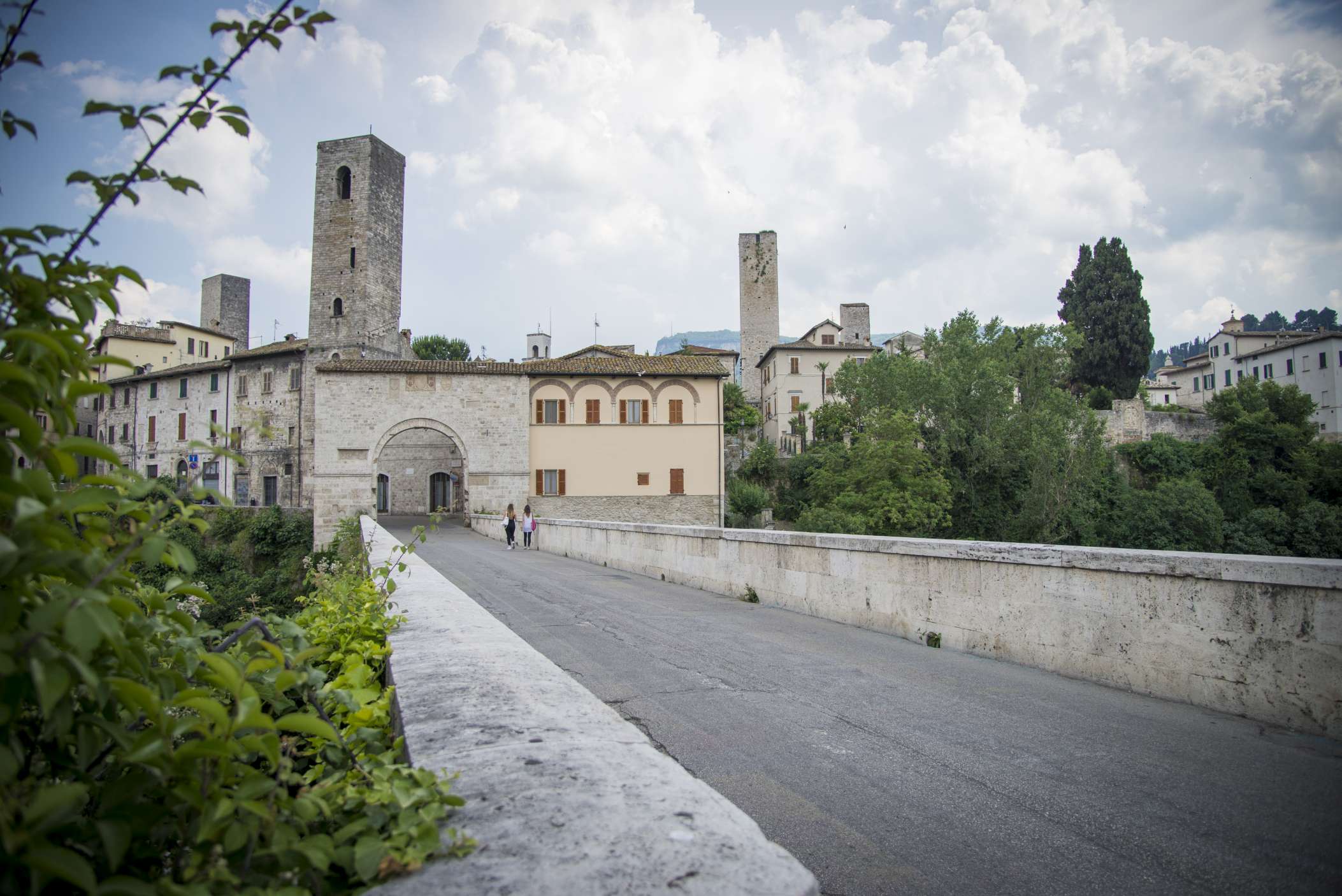Porta Solestà, also referred to as Porta Cappuccina (literally, “Capuchins’ Gate”), is one of the gateways to the town. This Romanesque monument was probably built in the same period as the Roman Bridge (Augustan Age). It was given the name “Cappuccina” (Capuchins’) in the XVI century, when the Commissioner Angelini granted the monks the authorization to build a little church near the Gate in 1544. In 1230 it was rebuilt by the Podestà (Chief Magistrate) of Ascoli, Fildesmo, by making use of debris from a pre-existing Roman Gate. It is located at the south end of the Roman Bridge, once the start of a secondary branch of the Via Salaria.
As for the origins of the name Solestà, several hypothesis have been put forward. Most of them tend to identify it to the Sun (Sole): some believe the existence of an ancient temple consecrated to the Sun God. Others assume that the name is to be referred to the Solis Statio, a solstice celebration that used to take place every year on 21st June and 21st December in a temple outside the city walls to worship the Sun God. Others again think this name derives from Sullae statio, in memory of the column Silla ordered to erect on the site.
The Solestà Bridge is a real gem of local architecture from the Augustan Age and is largely untouched since its construction. This one-arch bridge rests on two huge pillars and a base on the Tronto River. Over the centuries, it underwent several renovations: the first in the Middle Ages, the second during the Renaissance by Cola dell’Amatrice and the last in the early XIX century. On this latter occasion, the surface of the bridge was removed, the vault unloaded with the weight and replaced with a concrete and brick structure. An inner path has been dug up and is now accessible to tourists.





